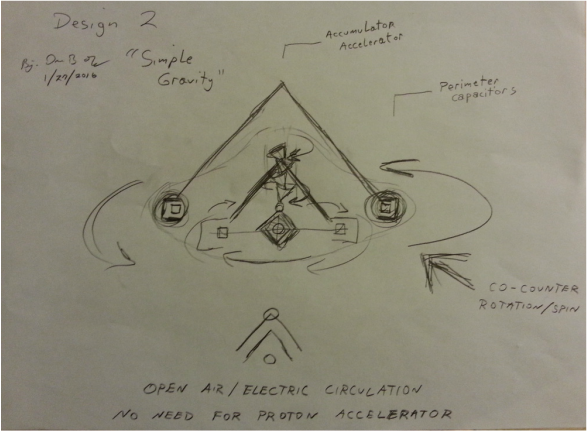Putting it together with a simple design principle. Looks vaguely familiar. Not discarding the other outer ring concept. Two variations. A unity is also possible . . . *
Perhaps now a little more long-range than the OTC-X1, and easier on the mind.
You can definitely see the similarities with Hamel's "Egyptian" style.
5-D
I am actually thinking about deleting this. It also reminds me of Searle's concept with the spinning and rotating magnets though. I rather like the idea of proton acceleration, however. As seen with Searle's big bulky craft, it doesn't take much rotation to achieve lift, and the OTC-X1 also demonstrated levetation at around the same RPM's. Searle used magnets (natural spin alignments in matter which creates the magnetic field). There is a lot more video and other evidence of Searle's ships actually working than Carr's ship. Airports in the UK were even building additions on to them when Searle actually started taking on passengers to travel in his disks. There are, by now, multiple ways to experiment with and achieve what must be said can be done.
Spin and rotation along with electrical alignment of charge in a magnetic field is Dr. Ning Li's concept of antigravity, as well. I think this website has explored the aspect of design fairly well, but without testing and experimentation, not much more can be said, except to just stay up with latest discoveries.
When the engineering catches up with the physics, then we'll be making progress. Other than that, it remains to be seen not IF we can do it, but WHEN.
A spinning disk on top and one on bottom with utrons sandwiched in between would be a little more obvious way to induce spin; timed magnetic reversals and AC antigravity was something Tesla had demonstrated to Samuel Clemens (Mark Twain) as well as I believe it was Nathan Rothschild (of of the Rothschilds, whom Tesla was friends with).
One thing that was brought up though, about the utrons, is a "bearing motor." Applying DC current to a couple of bearings mounted around a steel rod will get them to spin in one direction. Merely electrically charging the trunion bearing mount of the utron may very well CAUSE the utrons to spin. Problem solved.
See: http://www.warp-drive-physics.com/construction-blog/gyroscopes
Particle accelerators are probably the next step for my own journey. I think I have come full circle now with the information presented on this website. I will stay up with the OTC-X1 development and see where that leads, but the rest I will reserve for later. I need to take some time to meditate upon all this.
This is an odd post. I'm basically showing we can use an outer ring combined with utrons in a way similar to the X1 engine, in a pinch. However, the design of the LAU-X3 is for magneto-electrostatic proton-acceleration as a scalar field generator that also can warp time at a higher frequency. It can be tested in a few different ways, though.
The principles are well-defined. And as an alternative to very advanced particle acceleration, a mediocre particle acceleration is within our current technological ability so that instead of using a lot of heavy weight for a powerful particle acceleration, shortcuts can be taken to use magneto-electrostatic resonance on inertial systems. Rotating magneto-electrostatic vortex coils however, as the LAU-X3 primarily is portrayed, could also use spinning rings (have some mass and conductivity) around the outside and cones on the inside, or otherwise utrons, which makes use of open-air flow and co-counter rotational forces.
Some of the SSP information shows 2 particle accelerators, each 1/2 the circumference in a ring, and the left one flows clockwise for example, and the right one flows counter-clockwise (180 cancellation of an inertial "gravity wave"). Now that we know gravity waves exist, thanks to LIGO, we can start to put them into an engine construct.
It is unclear if an inertial field is also like a magnetic field, or an ionic electrical field of charge, which requires separation between the poles for an efficient and strong usage.
In light of a "static magnet," Co-counter-rotating magneto-static fields in use as the Outer Ring Engine -- spinning angled rings around cones, in combination with electrostatic (bare wire) coils in Rodin Geometry. The difference is how the electrostatic charge is aligned. The electric charge points to where the inertial field will line-up. It has to be in parallel to a general overall force of inertia. The Rodin Geometry is the ultimate geometry, but it is harder for strong forces of mass to accelerate in those complex vectors.
However a magneto-electrostatic field could increase the frequency (through resonance) of the "vibration" vertical core engine.
That is important ---^
Unconditional Love and Support on your Journeys.

 RSS Feed
RSS Feed